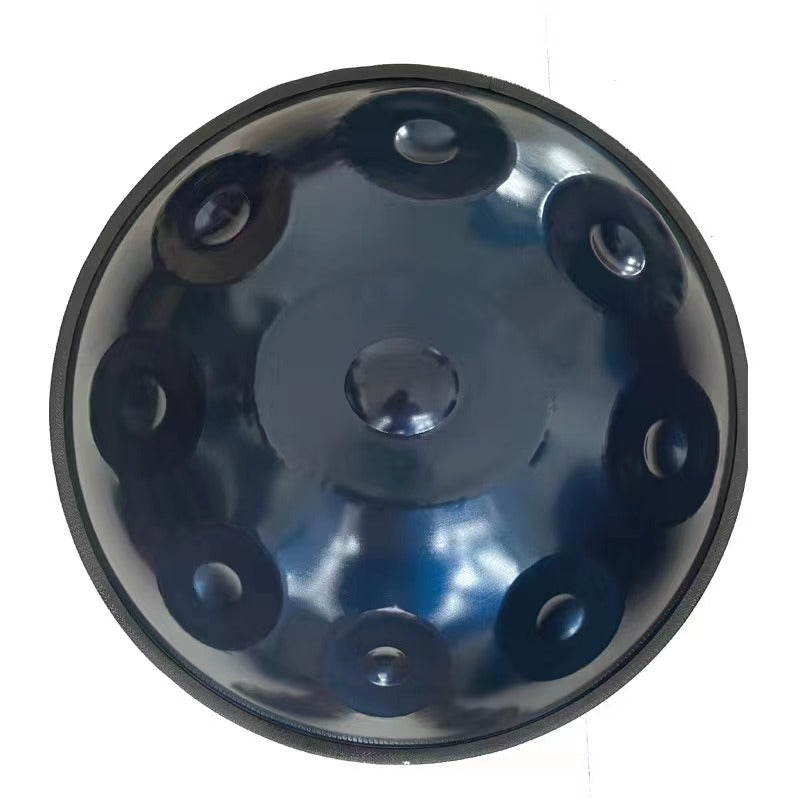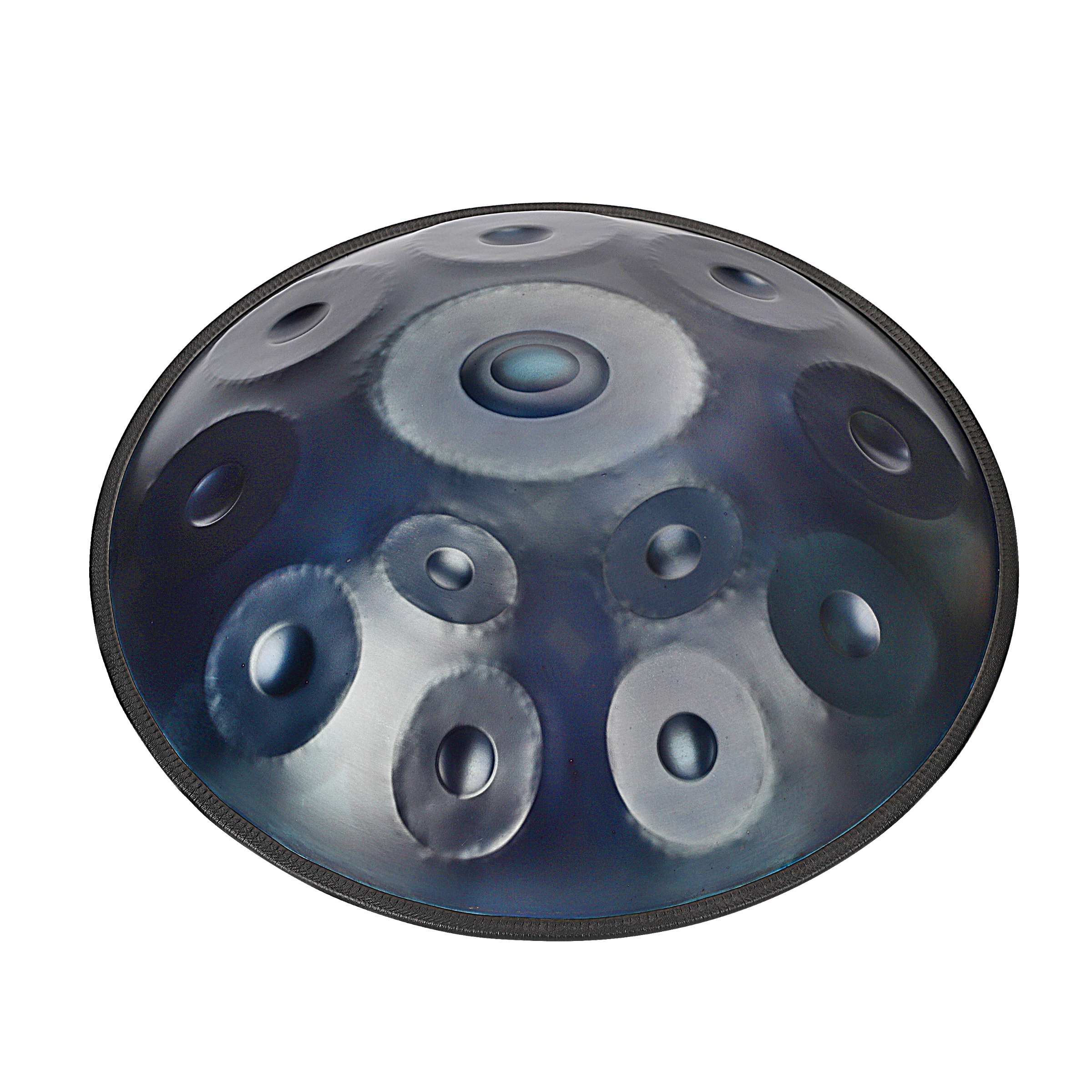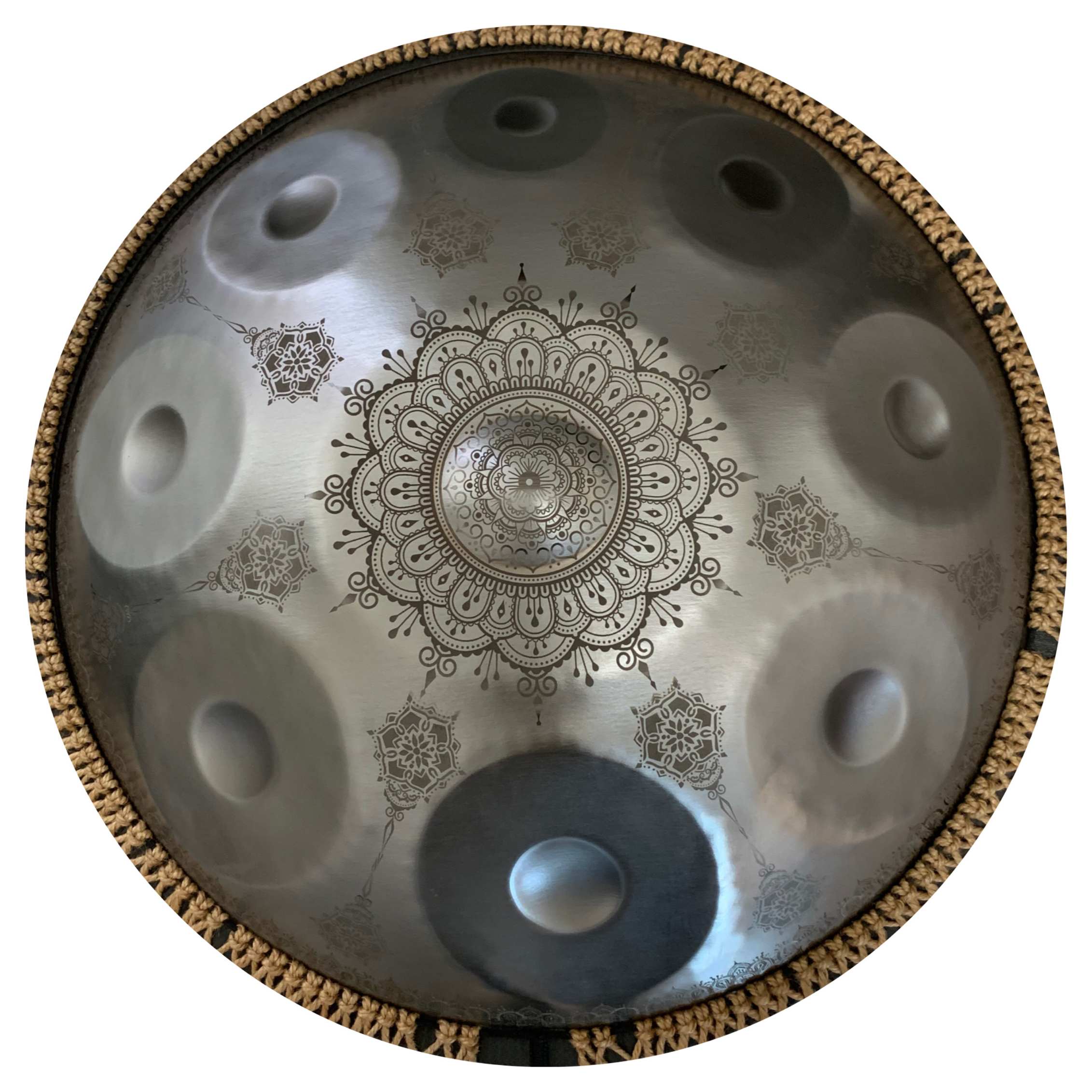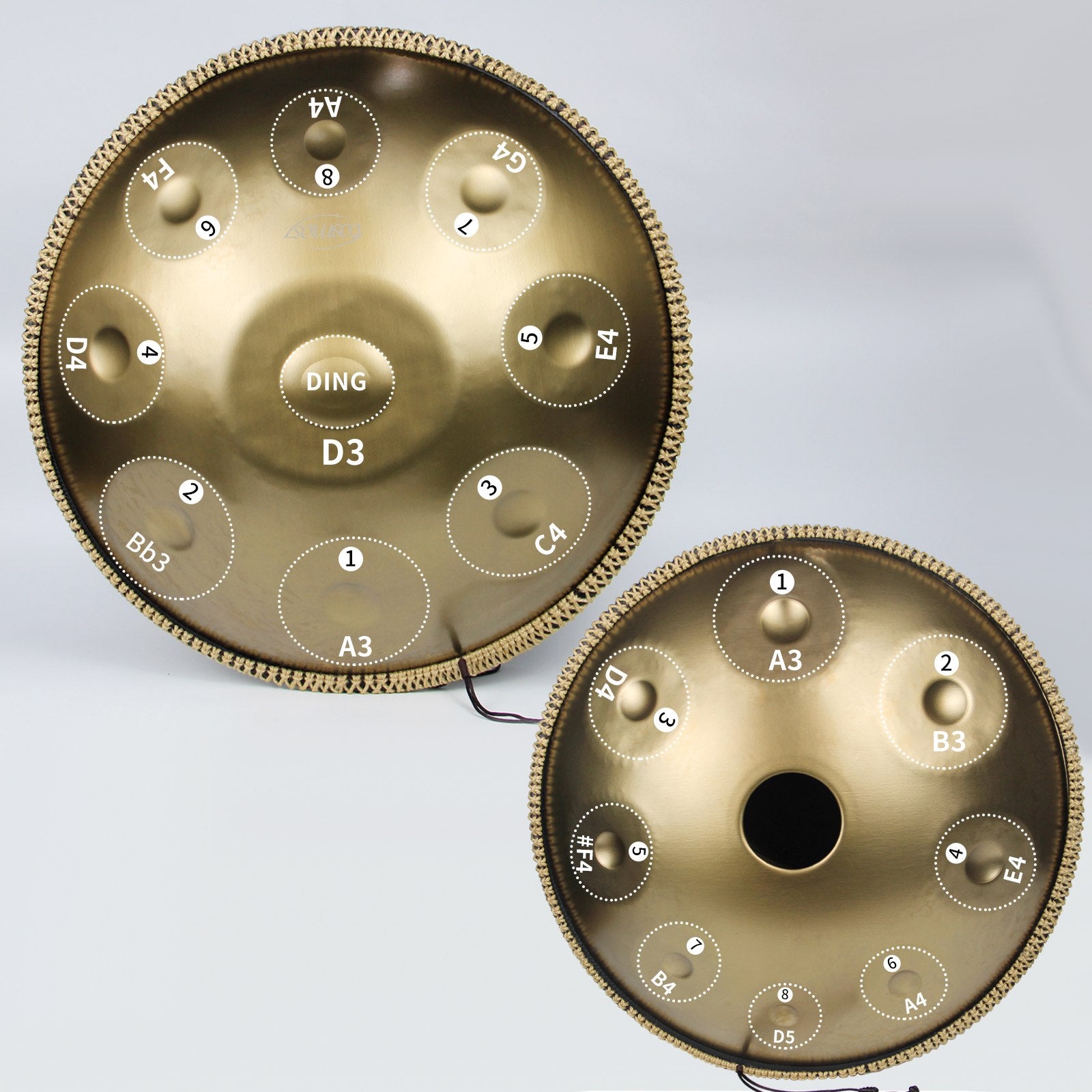
Dans la coutume de la musique, en particulier avec des dispositifs uniques comme un handpan, tout tourne autour de la fréquence et de la hauteur. Dans l'accordage d'autres instruments de musique, les fréquences de 432 Hz et 440 Hz ont une signification. Pour ceux d'entre vous qui souhaitent en savoir plus sur les sons magiques de l'instrument de musique handpan, apprendre ces fréquences est essentiel pour vous aider à choisir le tambour handpan parfait qui correspond à vos goûts. Dans cet article, nous explorerons les distinctions entre ces deux accordages répandus et comment ils ont influencé le tambour en acier handpan.
Comprendre les termes des fréquences musicales
Le concept dont nous parlons est la hauteur, donc il y a quelques éléments à garder à l'esprit avant de vous enfoncer dans la différence entre 432Hz et 440Hz. La fréquence des vibrations par seconde est connue sous le nom de Hz, et c'est autour de ce que les échelles musicales produisent. La note de l'échelle "A" est utilisée comme référence. En 1850, il y avait un accord universel selon lequel A3=440Hz, ce qui a abouti à une hauteur standard presque universellement utilisée aujourd'hui. En 1953, cela est devenu la norme mondiale pour la musique, qui sous-tend la musique moderne.
Avant cette normalisation, les accordages différaient considérablement d'une région à l'autre, allant de A=420Hz à A=460Hz. Cette diversité a permis des expérimentations beaucoup plus riches, mais était incohérente pour les collaborations. Ce problème a été résolu lorsque le diapason standard de 440Hz a été établi, facilitant la vie de l'instrument 'handpan drum' pour effectuer l'accord.
Fréquence du Handpan : 440Hz
Depuis des décennies, la norme a été l'accord à 440Hz, qui résonne à travers la symphonie classique, le groupe de jazz et, bien sûr, la chanson de radio moderne. Cet accord a été choisi pour plusieurs raisons :
- Tonalité équilibrée : La plage historique de A=420Hz à 460Hz a été utilisée comme référence ; 440Hz était un terrain d'entente.
- Compatibilité : Cela correspondait aux instruments à vent de l'époque.
- Plénitude du Son : Pour cette fréquence, le son produit était le plus robuste et le plus fort parmi les instruments à cordes.
Un accordage à 440Hz est un excellent point de départ pour les débutants sur un handpan. Cela est compatible avec la plupart des autres instruments pour une utilisation dans des groupes. De plus, l'accordage de cet instrument est familier à ceux qui écoutent la musique grand public.
Fréquence du Handpan : 432 Hz
Vraiment, l'accord à 432Hz est historiquement et spirituellement captivant. La fréquence 440Hz était courante dans la musique classique avant qu'ils ne fassent du 440Hz la norme. En 432Hz, il y a de nombreux chefs-d'œuvre comme ceux écrits par Beethoven et Mozart, qui possèdent une résonance distincte.
Dans le domaine des instruments de musique handpan, 432 Hz gagne en popularité pour plusieurs raisons :
- Tradition : La fréquence de 432 Hz est largement — et régulièrement — utilisée par les musiciens classiques pour honorer les œuvres des maîtres du passé.
- Appel spirituel : Appelée la "fréquence du cœur", cette fréquence est en accord avec les vibrations naturelles, comme le battement de cœur humain et la résonance de la Terre.
- Expérience Unique : Si vous aimez le son d'un handpan, d'un tambour en acier, à 432Hz, il a un son apaisant distinct que les gens associent à la pleine conscience et à la relaxation.
Si vous recherchez une connexion émotionnelle plus profonde ou explorez la musique spirituelle, un handpan en acier accordé à 432Hz est probablement le meilleur choix.
Les différences entre 432Hz et 440Hz.
Les différences audibles entre ces accordages sont subtiles mais significatives :
- Tonalité : Un handpan de 440Hz sonne un peu plus haut qu'un autre, de même qualité, accordé à 432Hz.
- Résonance : Plus naturel, plus chaud, paisible—c'est ainsi que beaucoup décrivent 432Hz ; plus lumineux, plus précis, et certains utilisent même des mots comme sinistre—ce sont les adjectifs qui peuvent décrire 440Hz.
- Harmonie : Les différences sont les plus grandes lorsque deux instruments de tempérament différent sont joués en même temps, créant une dissonance.
Sans comparaison directe ou oreille absolue (une capacité rare), il peut être difficile, apparemment, de déterminer, à l'oreille, ce qui est à 432Hz ou 440Hz. Les deux accordages conservent la même échelle relative, donc une mélodie jouée dans l'un est très similaire à la même mélodie jouée dans l'autre.
Fréquence de Handpan et Jeu Solo
L'instrument handpan est souvent joué seul, permettant aux musiciens de choisir la tonalité qu'ils préfèrent sans avoir à penser à l'harmonisation avec d'autres instruments. C'est tellement individualisé que c'est une excellente option pour ceux qui souhaitent un voyage musical personnalisé. Votre handpan vous permet de choisir entre la familiarité universelle de 440Hz ou la chaleur spirituelle de 432Hz.
Meilleur Handpan pour Débutants
Lorsqu'ils choisissent un handpan, les débutants devraient considérer leurs objectifs musicaux :
- 440Hz Handpans : Idéaux pour l'apprentissage et la collaboration. Ces handpans s'alignent sur ce que fait la musique grand public, donc trouver des ressources pédagogiques et jouer avec d'autres instruments n'est pas si difficile.
- 432Hz Handpans : C'est parfait pour les joueurs solos ou ceux qui investissent dans la pleine conscience et la méditation à travers la musique. Il est unique et offre une expérience de réglage plus riche.
Si vous êtes débutant, vous pouvez commencer avec le handpan, un tambour en acier accordé à 440 Hz. Au fur et à mesure que vos compétences et préférences se développent, vous pouvez expérimenter avec 432 Hz, ou si vous le souhaitez, avec 444 Hz (une fréquence moins courante), révélant ainsi de nouveaux domaines musicaux intéressants.
Considérations pour les joueurs de handpan
Les handpans sont des instruments sensibles ; ils réagissent à leur environnement quelle que soit la fréquence. Des facteurs comme les variations de température peuvent légèrement modifier la hauteur :
- Température uniforme : Votre handpan doit être maintenu accordé par un chauffage ou un refroidissement constant.
- Chauffage inégal : Certaines parties de l'instrument de percussion handpan peuvent se dilater de manière inégale lorsqu'elles sont exposées à la lumière du soleil ou au feu et sonner faux.
Conclusion
Il n'y a pas de mauvaise réponse entre 432Hz et 440Hz. Tout dépend de la préférence personnelle et de l'intention d'utilisation. Ils ont tous deux leur propre rôle, chacun présentant des avantages différents, permettant aux musiciens d'explorer d'autres paysages sonores en utilisant leurs instruments de musique handpan. Si vous aimez écouter l'harmonie universelle de 440Hz, ou si vous croyez en la résonance spirituelle de 432Hz, vous serez ravi d'apprendre que le handpan est suffisamment polyvalent pour réaliser vos rêves musicaux.
Un handpan à 440Hz pour les débutants est généralement un excellent premier choix pour les débutants en raison de sa compatibilité croisée et de son son familier. Plus vous progressez, plus vous explorerez d'autres accordages pour plonger encore plus profondément dans le monde illimité de l'incroyable instrument hang.







